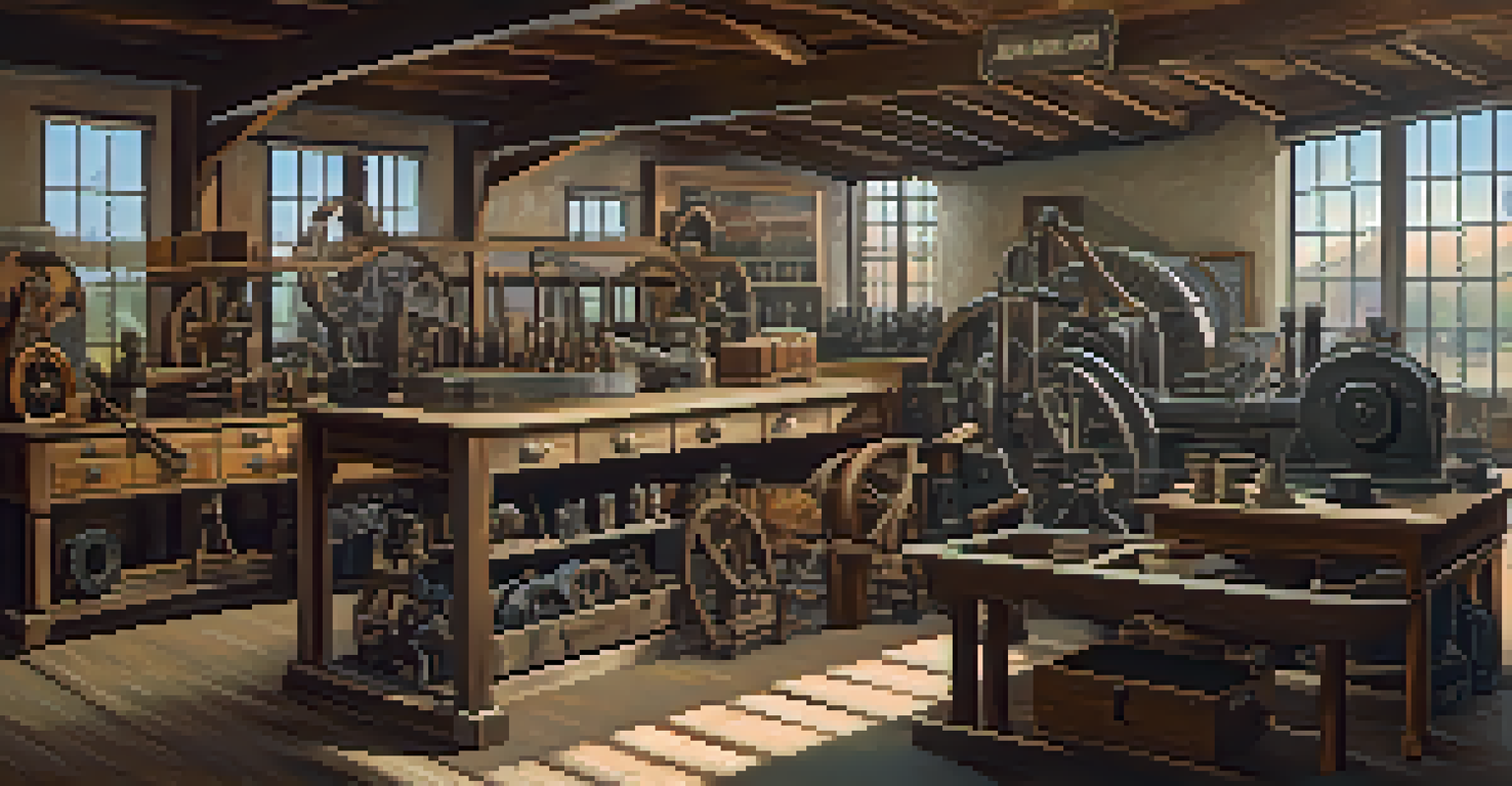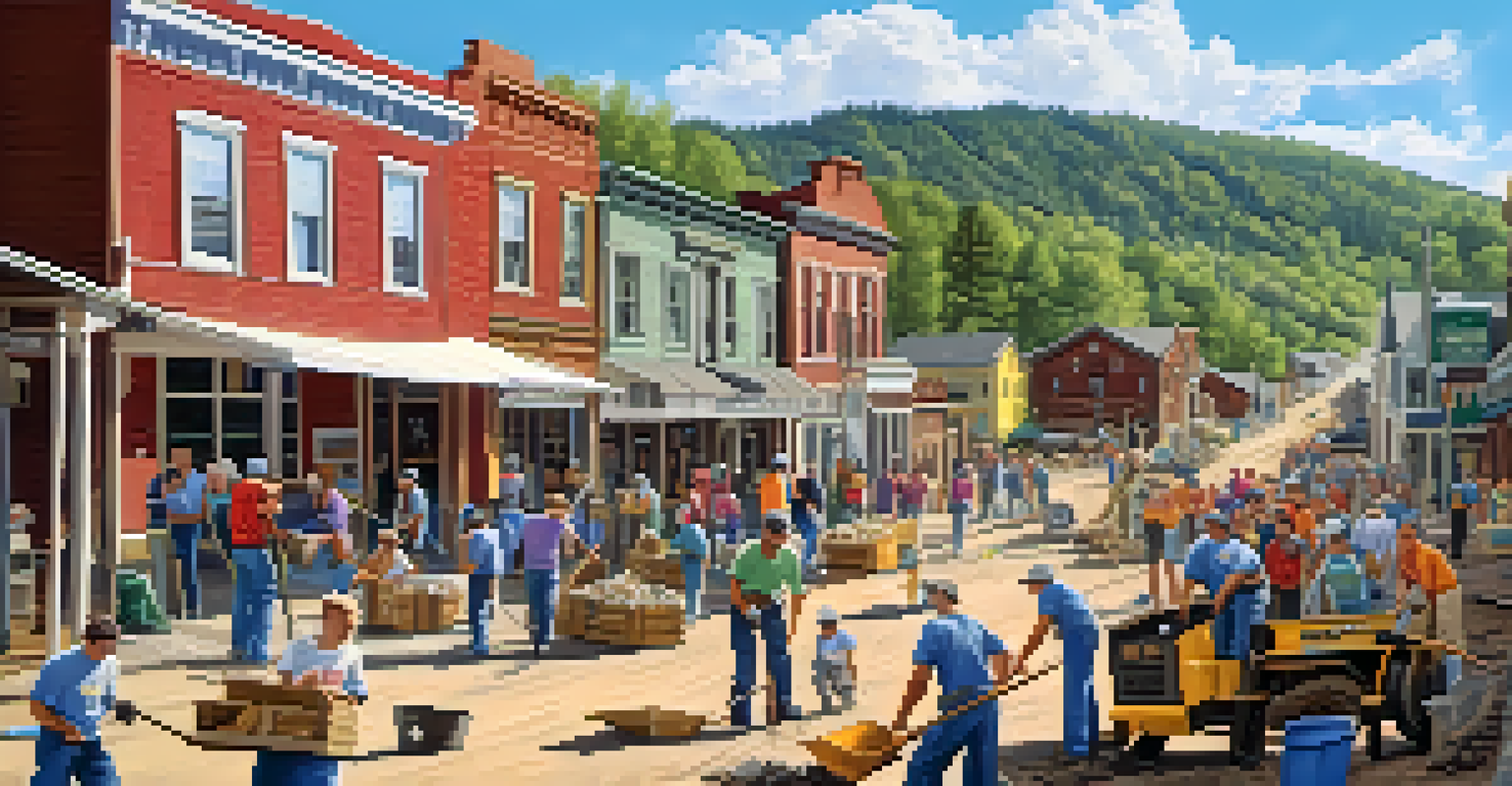Preservation Efforts for Arizona's Historic Mining Towns

The Rich History of Arizona's Mining Towns
Arizona's historic mining towns are a testament to the state's vibrant past. Established during the gold and silver rush, these towns were once bustling hubs of activity and commerce. They played a pivotal role in shaping Arizona's economy and culture, leaving behind a legacy that is still evident today.
Preservation is a form of empowerment for communities to tell their own stories.
Each town tells a unique story, from Tombstone's infamous gunfight at the O.K. Corral to Jerome's transformation from a mining powerhouse to a ghost town. These narratives not only enrich our understanding of Arizona’s history but also highlight the resilience of its communities. The allure of these stories draws both locals and tourists eager to explore the remnants of a bygone era.
However, as time marches on, many of these historic sites face the threat of decay and neglect. This has sparked a renewed interest in preservation efforts, as communities recognize the importance of safeguarding their heritage for future generations.
Challenges Facing Historic Preservation
Preserving Arizona's mining towns comes with its own set of challenges. Weathering, vandalism, and urban development pose significant risks to these historic sites. For instance, the harsh desert climate can accelerate deterioration, making it crucial to implement protective measures.

Moreover, funding for preservation projects is often limited, which can hinder restoration efforts. Local governments and non-profit organizations frequently rely on donations and grants, making it a constant struggle to secure the necessary resources. This financial hurdle can lead to delays in projects that are vital for maintaining the towns' historical integrity.
Preserving Arizona's Mining Heritage
Efforts to preserve historic mining towns are crucial for maintaining Arizona's rich cultural and economic legacy.
Community involvement plays a vital role in overcoming these obstacles. Grassroots initiatives often emerge, rallying local residents to advocate for their heritage and contribute to preservation efforts. These community-driven projects not only enhance awareness but also foster a sense of pride in local history.
Key Preservation Projects in Arizona
Several noteworthy preservation projects are currently underway in Arizona's historic mining towns. In Tombstone, restoration efforts are focused on key buildings like the Bird Cage Theatre and the historic courthouse, which serve as major attractions. These projects aim to keep the town's rich history alive for future visitors.
History is not a burden on the memory, but an illumination of the soul.
In Jerome, a former copper mining town, the local historical society has embarked on restoring several structures, including the old hospital, which tells the story of the town’s unique past. This project not only preserves history but also promotes tourism, benefiting the local economy.
Additionally, the Ghost Town Trail initiative aims to connect various mining towns through a network of trails and interpretive signs. This project encourages exploration and appreciation of the region's history while promoting conservation efforts across multiple sites.
The Role of Local Communities in Preservation
Local communities are at the heart of preservation efforts for Arizona's mining towns. Residents often take the lead in advocating for the protection of their historical sites, organizing clean-up days, and fundraising events. Their passion and commitment can make a substantial difference in the success of preservation initiatives.
Community engagement not only helps raise funds but also fosters a deeper connection between residents and their history. When locals share stories and experiences, it creates a sense of ownership and pride, motivating others to get involved. This grassroots approach is essential for sustaining preservation efforts in the long run.
Community Involvement Drives Success
Active participation from local residents is essential for successful preservation initiatives and fosters pride in their history.
Moreover, educational programs and workshops can empower community members to learn more about their heritage. By understanding the significance of their mining towns, locals become more invested in preserving their history for future generations.
The Economic Impact of Preservation
Preserving Arizona's historic mining towns has significant economic implications. These towns often attract tourists, providing vital revenue for local businesses and communities. Visitors seeking to experience the rich history and culture boost the economy, making preservation economically beneficial.
Additionally, restoration projects can create job opportunities for skilled workers in restoration and tourism sectors. This not only helps the local economy but also fosters a sense of pride among residents as they see their community flourish. The revitalization of historic areas often leads to increased property values and new investments.
Furthermore, as more people are drawn to these preserved sites, it encourages the development of new attractions and amenities. This cycle of preservation and economic growth can create a sustainable model for maintaining the towns' heritage while supporting local livelihoods.
The Importance of Education in Preservation
Education plays a critical role in the preservation of Arizona's historic mining towns. By teaching residents and visitors about the significance of these sites, we can foster a culture of appreciation and stewardship. Schools, museums, and community organizations often collaborate to create programs that highlight local history.
Workshops and guided tours not only inform participants about the past but also inspire them to take an active role in preservation efforts. When people understand the importance of these towns, they are more likely to support initiatives aimed at safeguarding their heritage. This educational approach can create a lasting impact on community values.
Education Enhances Preservation Efforts
Educational programs play a vital role in raising awareness and encouraging stewardship of Arizona's historic mining sites.
Moreover, integrating history into school curriculums can instill a sense of pride in young people. As they learn about their local heritage, they may be motivated to become future advocates for preservation, ensuring that the stories of Arizona's mining towns continue to be told.
Future Directions for Preservation Efforts
Looking ahead, the future of preservation efforts for Arizona's historic mining towns appears promising yet challenging. With advancements in technology, innovative methods for restoration and conservation are emerging. For instance, digital archives and 3D modeling can aid in preserving the historical accuracy of buildings and artifacts.
Additionally, collaboration between local governments, non-profits, and private sectors can enhance preservation initiatives. By pooling resources and expertise, these partnerships can lead to more comprehensive strategies for maintaining these historical sites. Community-led initiatives will continue to play a crucial role in driving these efforts forward.

Ultimately, the key to successful preservation lies in fostering a shared love for history among residents and visitors alike. By engaging the community and leveraging new technologies, Arizona's historic mining towns can look forward to a future where their rich legacies are celebrated and protected.